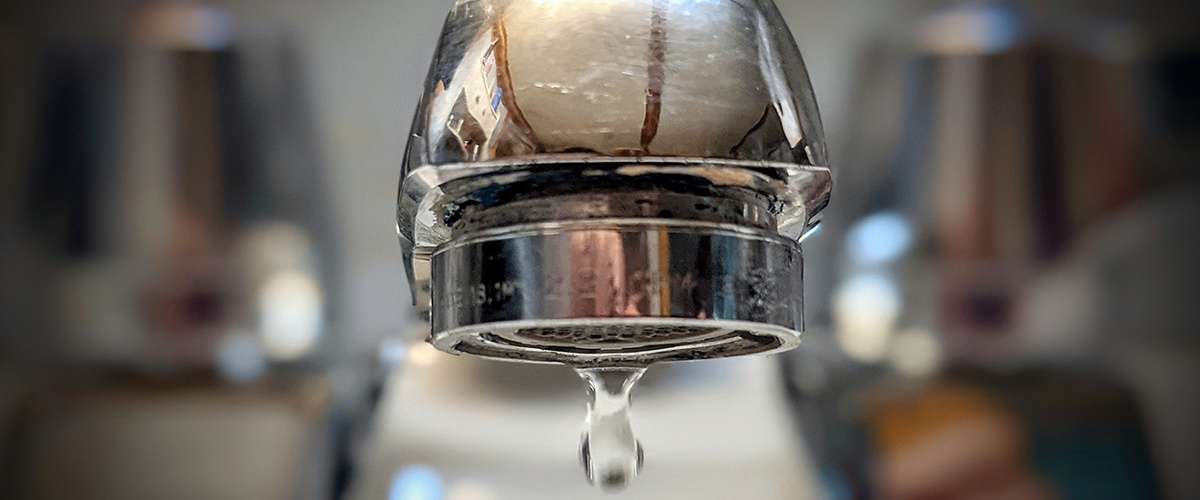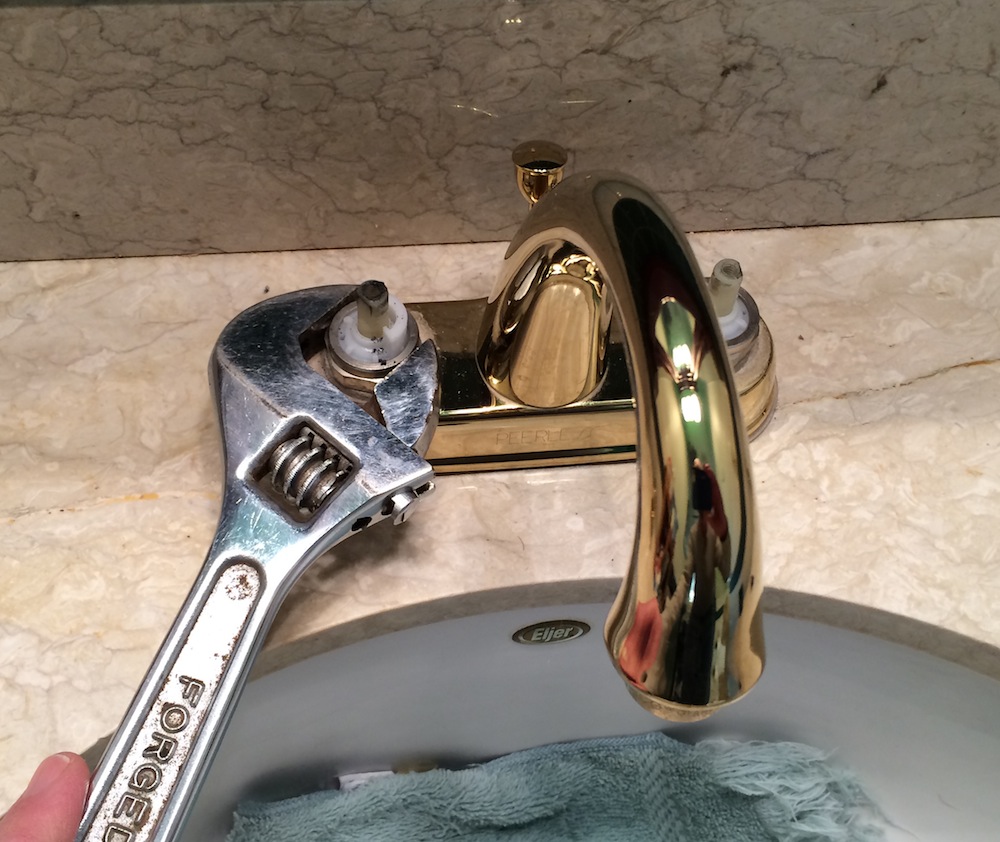Motives Why It's Essential to Repair a Broken Faucet
Motives Why It's Essential to Repair a Broken Faucet
Blog Article
They are making a few great points on the subject of Leaky Faucets: Why They Happen & What to Do About Them as a whole in this article down the page.

Leaking taps could seem like a minor hassle, however their effect surpasses simply the annoyance of the sound. From wasting water to incurring unnecessary financial costs and health risks, ignoring a dripping faucet can lead to numerous effects. In this write-up, we'll delve into why it's crucial to resolve this usual family issue promptly and effectively.
Wastefulness of Water
Ecological Impact
Trickling taps contribute significantly to water wastefulness. According to the Environmental Protection Agency (EPA), a single tap leaking at one drip per second can lose more than 3,000 gallons of water each year. This not only pressures water resources yet also influences environments and wild animals based on them.
Step-by-Step Overview to Repairing a Dripping Tap
Tools Called for
Before attempting to deal with a dripping faucet, collect the necessary tools, consisting of a flexible wrench, screwdrivers, replacement parts (such as washing machines or cartridges), and plumber's tape.
Usual Tap Issues and Their Solutions
Determine the kind of tap and the details issue causing the drip. Typical issues consist of damaged washing machines, corroded shutoff seats, or damaged O-rings. Refer to producer instructions or on-line tutorials for step-by-step guidance on repair services.
Financial Prices
Enhanced Water Costs
Past the environmental effect, leaking faucets can blow up water expenses considerably. The accumulated wastage over time converts right into higher energy expenditures, which might have been avoided with timely fixings.
Prospective Building Damages
Furthermore, prolonged leaking can lead to harm to fixtures and surface areas surrounding the tap. Water build-up can cause discoloration, corrosion, and even architectural problems if left neglected, leading to added repair work costs.
Wellness Concerns
Mold And Mildew and Mold Growth
The continuous visibility of moisture from a leaking tap develops an optimal setting for mold and mildew and mildew growth. These fungi not only compromise indoor air high quality however additionally posture health risks, particularly for individuals with respiratory system problems or allergic reactions.
Waterborne Conditions
Stagnant water in dripping taps can come to be a breeding ground for bacteria and other virus, raising the threat of waterborne conditions. Pollutants such as Legionella germs flourish in stagnant water, possibly causing major diseases when ingested or breathed in.
DIY vs. Professional Fixing
Benefits and drawbacks of Do It Yourself Repair Service
While some may try to repair a trickling faucet themselves, do it yourself repair services come with their very own set of difficulties. Without proper understanding and tools, DIY efforts can intensify the concern or lead to insufficient repair services, lengthening the problem.
Advantages of Hiring a Specialist Plumber
Hiring an expert plumber makes certain that the underlying cause of the leaking tap is resolved effectively. Plumbings have the competence and tools to identify and fix faucet concerns efficiently, conserving time and lessening the risk of further damage.
Ecological Responsibility
Individual Contribution to Conservation
Taking duty for dealing with dripping taps straightens with more comprehensive initiatives towards water preservation and environmental sustainability. Every person's actions collectively make a significant effect on preserving priceless resources.
Sustainable Living Practices
By prioritizing timely repair services and adopting water-saving practices, people add to sustainable living techniques that benefit both existing and future generations.
Preventive Measures
Normal Maintenance Tips
To stop dripping faucets, do routine upkeep such as cleaning up aerators, checking for leaks, and replacing damaged components promptly. Furthermore, take into consideration mounting water-saving tools or updating to much more efficient components.
Significance of Prompt Services
Attending to trickling faucets as quickly as they're noticed protects against additional water waste and potential damages, eventually conserving both water and money over time.
Effect On Residential Property Value
Understanding of Well-Maintained Building
Keeping a building in good condition, including resolving maintenance issues like dripping taps, enhances its perceived value and charm among prospective buyers or lessees.
Impact on Resale Value
Properties with properly maintained plumbing fixtures, including faucets, command greater resale worths in the real estate market. Addressing dripping faucets can contribute to a favorable impression throughout building assessments and arrangements.
Verdict
Dealing with a trickling faucet goes beyond plain comfort; it's a vital action toward conserving water, minimizing financial prices, and protecting health and home. Whether with do it yourself repair services or specialist aid, taking action to deal with trickling faucets is a tiny yet impactful means to advertise responsible stewardship of sources and add to a much healthier, extra sustainable future.
How to Fix a Leaky Faucet: Step-by-Step Repair Guide
A leaky faucet may seem like a simple annoyance, but if it's not fixed promptly, that leak could cost hundreds to potentially thousands. From water damage to mold, mildew, and high water bills, even a tiny leak can be catastrophic if left unattended. Damage like this can even affect the overall value of your home, so it's important to take the right approach for leaky faucet repair. You may need the help of a plumber in some cases, but we've got a few tips you can try on how to fix a leaky faucet before calling the pros.
Four Faucet Types
When you're learning how to fix a leaky faucet, the first step is knowing what kind of faucet you're working with! There are four common types.
Cartridge Faucets
Cartridge faucets come in one- or two-handled varieties. In one-handled cartridge faucets, hot and cold water combines in a single cartridge. In the two-handled versions, hot and cold water are controlled separately and mixed in the faucet.
Ball Faucets
Ball faucets have a single lever you push up and down to adjust the pressure and rotate to change the temperature. A slotted metal ball controls the amount of water allowed into the spout.
Compression Washer Faucets
They're the oldest type of faucet, but they're still used in many homes — especially older ones. Compression faucets have two separate handles that, when turned, raise or lower the washer that seals a water valve. This valve stops water from flowing through the faucet when it is turned off.
Disc Faucets
Disc faucets rarely need to be repaired due to their maintenance-free design. The water flow is controlled by two discs — the upper one raises and lowers against a fixed lower disc, creating a watertight seal. If your disc faucet starts leaking, you may need to replace the seals or clean residue buildup from the inlets.
Fixing a Leaky Faucet
Step 1: Turn Off the Water
Whether you're learning how to fix a leaky bathtub faucet or how to fix a leaky kitchen faucet, always turn off the water supply to your working area when you're fixing a leak. The last thing you want is a flood added to your list of things to fix.
Look for the shutoff valves below your sink or around the tub and turn them clockwise to stop the water flow. If your faucet doesn't have shutoff valves, you may need to turn off the water for the whole house. Check to make sure it's off by turning the faucet on. If nothing comes out, you're ready to start the repair.
Step 2: Take Apart the Faucet
How you disassemble your faucet depends on the type of fixture you have. You can use a flathead screwdriver to remove the caps on top of the handle or handles for cartridge and compression faucets. Inside, you should see handle screws. Unscrew these with a screwdriver to remove the handle.
Disc- and ball-style faucets will typically have an inlet screw near the handle, and removing that will reveal the interior of the faucet.
Detach the Valve Stem
For cartridge- and compression-style faucets, you'll see the inner valve stem or cartridge once you remove the faucet handles. If you have a compression faucet, unscrew the brass valve stem. If you have a cartridge faucet, pull out the cartridge. If your cartridge has been in place for a while, it may require some tools or extra force to remove it due to mineral deposits.
Examine and Replace Parts
Once you've removed the parts, check them out to confirm what needs to be replaced. You may see corroded rubber washers, O-rings, stems, or cartridges. On a ball-style faucet, check the seats and springs for damage.
If you need to repair a leaky disc faucet, check the inlet and seals on the lower disc.
Once you determine what parts must be replaced, visit your local hardware store. Bring the damaged parts with you to ensure you can purchase the correct components to replace them.
Clean Valves and Faucet Cavity
If you've removed a stem or cartridge, you may notice mineral buildup in the faucet's threads. Use white vinegar to clean the valve seat by soaking it for a few minutes, then scrub it away with a soft toothbrush and rinse with warm water. You can also clean the interior of the faucet in the same way.
Reassemble the Faucet
Once your faucet is cleaned and the required parts have been replaced, it's time to reassemble it. Put the pieces back together and slowly turn the water supply back on. Doing this slowly is crucial because too much initial water pressure can damage the new hardware you've just installed.
https://homewarranty.firstam.com/blog/how-to-fix-leaky-faucet

As a devoted person who reads about How to Fix a Dripping or Leaky Faucet , I figured sharing that information was mandatory. Are you aware of someone else who is in to the niche? Do not hesitate to promote it. I praise you for being here. Come back soon.
Report this page